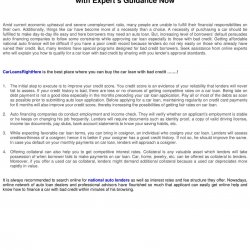how to cite yahoo finance apa can be fun for anyone

A swap, in finance, is an arrangement between two counterparties to exchange financial instruments or cashflows or payments for a specific time. The instruments can be almost anything but many swaps include money based on a notional principal quantity. The basic swap can likewise be seen as a series of forward agreements through which two parties exchange financial instruments, resulting in a common series of exchange dates and 2 streams of instruments, the legs of the swap. The legs can be practically anything but normally one leg involves cash circulations based upon a notional principal amount that both celebrations accept.
In practice one leg is generally repaired while the other is variable, that is figured out by an uncertain variable such as a benchmark interest rate, a foreign exchange rate, an index cost, timeshare foreclosure on credit report or a product price. Swaps are mostly non-prescription contracts in between business or banks (Which results are more likely for someone without personal finance skills? Check all that apply.). Retail financiers do not generally engage in swaps. A home loan holder is paying a drifting rate of interest on their home mortgage but expects this rate to increase in the future. Another home loan holder is paying a set rate but anticipates rates to fall in the future. They enter a fixed-for-floating swap arrangement. Both home loan holders agree on a notional principal amount and maturity date and agree to handle each other's payment responsibilities.
By utilizing a swap, both parties effectively altered their home mortgage terms to their favored interest mode while neither party had to renegotiate terms with their mortgage lenders. Considering the next payment only, both celebrations might also have entered a fixed-for-floating forward agreement. For the payment after that another forward contract whose terms are the same, i. e. same notional amount and fixed-for-floating, and so on. The swap contract for that reason, can be viewed as a series of forward agreements. In the end there are 2 streams of cash streams, one from the celebration who is always paying a set interest on the notional quantity, the fixed leg of the swap, the other from the party who consented to pay the floating rate, the drifting Click here leg.
Swaps were first presented to the public in 1981 when IBM and the World Bank entered into a swap contract. Today, swaps are amongst the most heavily traded monetary contracts in the world: the overall quantity of interest rates and currency swaps exceptional was more than $348 trillion in 2010, according to Bank for International Settlements (BIS). Many swaps are traded over-the-counter( OTC), "tailor-made" for the counterparties. The Dodd-Frank Act in 2010, nevertheless, pictures a multilateral platform for swap estimating, the swaps execution facility (SEF), and requireds that swaps be reported to and cleared through exchanges or clearing houses which subsequently caused the development of swap data repositories (SDRs), a central facility for swap information reporting and recordkeeping.
futures market, and the Chicago Board Options Exchange, signed up to end up being SDRs. They began to note some kinds of swaps, swaptions and swap futures on their platforms. Other exchanges followed, such as the Intercontinental, Exchange and Frankfurt-based Eurex AG. According to the 2018 SEF Market Share Statistics Bloomberg controls the credit rate market with 80% share, TP dominates the FX dealer to dealer market (46% share), Reuters dominates the FX dealership to client market (50% share), Tradeweb is greatest in the vanilla rate of interest market (38% share), TP the most significant platform in the basis swap market (53% share), BGC controls both the swaption and XCS markets, Tradition is the most significant platform for Caps and Floors (55% share).
At the end of 2006, this was USD 415. 2 trillion, more than 8. 5 times the 2006 gross world product. Nevertheless, considering that the capital created by a swap is equal to a rates of interest times that notional quantity, the cash circulation produced from swaps is a substantial fraction of however much less than the gross world productwhich is likewise a cash-flow step. Most of this (USD 292. 0 trillion) was due to rate of interest swaps. These split by currency as: Source: BIS Semiannual OTC derivatives data at end-December 2019 Currency Notional exceptional (in USD trillion) End 2000 End 2001 End 2002 End 2003 End 2004 End 2005 End 2006 16.
9 31. 5 44. 7 59. 3 81. 4 112. 1 13. 0 18. 9 23. 7 33. 4 44. 8 74. 4 97. 6 11. 1 10. 1 12. 8 17. 4 21. 5 25. 6 38. 0 4. 0 5. 0 6. 2 7. 9 11. 6 15. 1 22. 3 1. 1 1. 2 1. 5 2. 0 2. 7 3. 3 3. 5 Source: "The Worldwide OTC Derivatives Market at end-December 2004", BIS, , "OTC Derivatives Market Activity in the 2nd Half of 2006", BIS, A Major Swap Individual (MSP, or in some cases Swap Bank) is a generic term to describe a financial organization that helps with swaps in between counterparties.
The Buzz on How To Finance An Investment Property

A swap bank can be an international industrial bank, a financial investment bank, a merchant bank, or an independent operator. A swap bank serves as either a swap broker or swap dealership. As a broker, the swap bank matches counterparties but does not presume any threat of the swap. The swap broker gets a commission for this service. Today, many swap banks work as dealerships or market makers. As a market maker, a swap bank is prepared to accept either side of a currency swap, and after that later on on-sell it, or match it with a counterparty. In this capability, the swap bank presumes a position in the swap and therefore assumes some threats.
The two main factors for a counterparty to use a currency swap are to obtain debt financing in the switched currency at an interest expense reduction caused through comparative benefits each counterparty has in its national capital market, and/or the benefit of hedging long-run currency exchange rate exposure. These reasons seem simple and challenging to argue with, specifically to the level that name recognition is truly important in raising funds in the international bond market. Companies utilizing currency swaps have statistically higher levels of long-lasting foreign-denominated debt than firms that use no currency derivatives. Alternatively, the main users of currency swaps are non-financial, international companies with long-term foreign-currency funding requirements.

Financing foreign-currency financial obligation using domestic currency and a currency swap is for that reason exceptional to funding directly with foreign-currency debt. The 2 main factors for switching rate of interest are to better match maturities of possessions and liabilities and/or to acquire an expense savings via the quality spread differential (QSD). Empirical evidence suggests that the spread between AAA-rated business paper (drifting) and A-rated commercial is somewhat less than the spread in between AAA-rated five-year commitment (fixed) and an A-rated responsibility of the exact same tenor. These findings suggest that firms with lower (greater) credit scores are more most likely to pay repaired (drifting) in swaps, and fixed-rate payers would use more short-term debt and have much shorter debt maturity than floating-rate payers.






Ingen kommentarer endnu